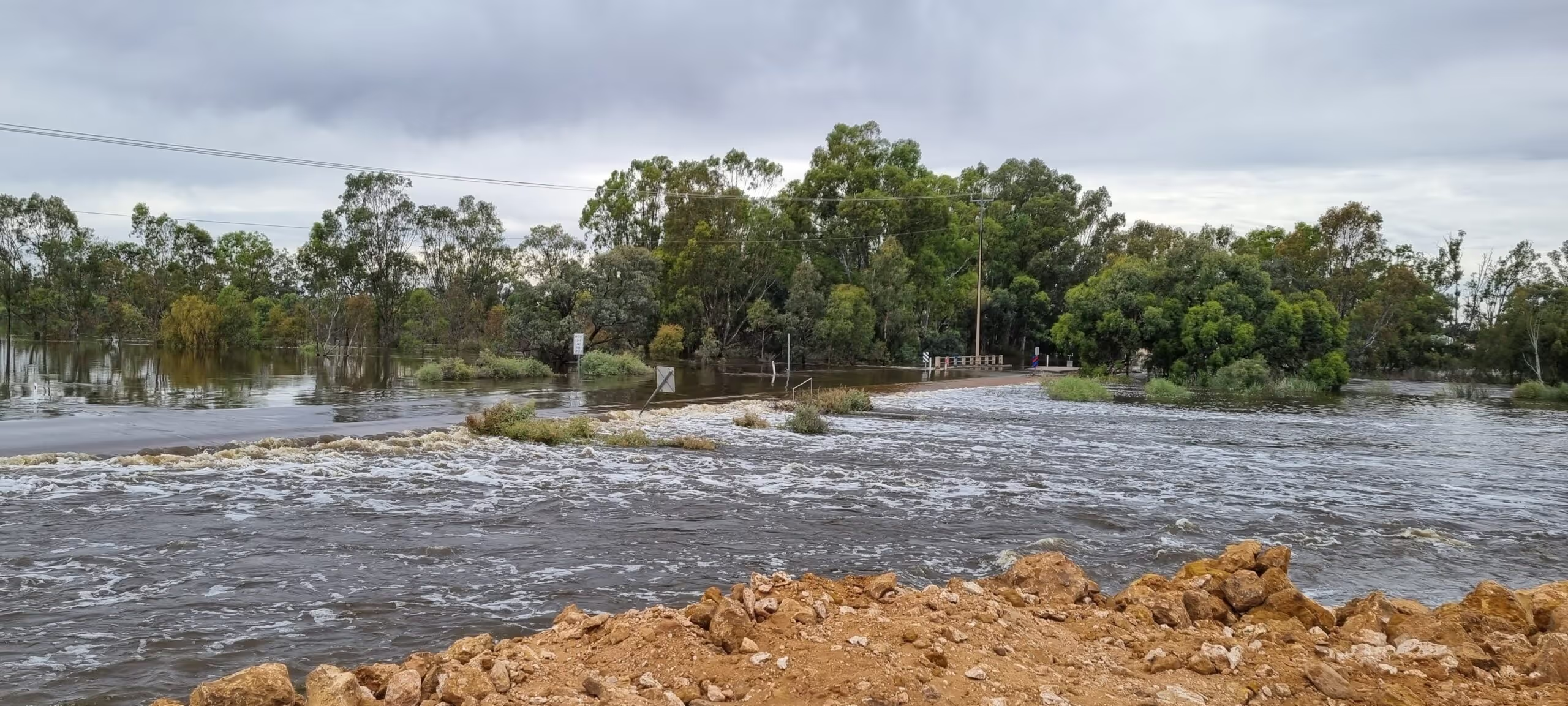Three consecutive years of La Niña (also known as triple-dip event) have been responsible for heavy rainfall in Queensland, New South Wales, and Victoria. This caused sustained high in-channel flows in 2021-22 and, in 2022-23, exceptionally high flows along the Murray River, including the lower part in South Australia.
South Australia, being a semi-arid territory, has historically recorded sparse floods and high flow events.
In 2022, Riverland communities watched flows increase steadily in late May, reaching bank-full flow (45 gigalitres per day) at the South Australian border in late July. Following predictions of flows reaching more than 200 GL/day, riverbank levies were built in many Riverland towns and community members and businesses prepared for the high water levels as best they could.
This flooding caused significant damage to homes, businesses and public infrastructure, and a lengthy and costly recovery process lies ahead for our river communities.

For a few months, many images of picnic tables, streets and bridges under water appeared on the news and social media channels. Floodplains were inundated and tree trunks and electricity poles were submerged.

However, the high flows that damaged buildings and roads also delivered several environmental benefits. Water flow is the life of all rivers, including the mighty Murray River, and periods of high flow are an integral part of a natural flow regime. High flows and floods represent the river’s strong heartbeat.
Positive environmental outcomes from high flows include improving connection between rivers and floodplains, replenishing groundwater, filling up wetlands and moving salt, nutrients and biological matter from floodplains.
High flows are particularly important to support the breeding cycle of many waterbirds and fish. Some native fish such as golden perch rely on high water flows to trigger spawning, while others like Murray cod generally show improved recruitment when fast flowing habitats are present. The Lower Murray team have recorded improved recruitment of both species, at different times, since 2015.


High flows also contributed to the regeneration and maintenance of floodplain vegetation such as river red gum and black box. Temporary high water levels can wet usually dry areas of the riverbank (littoral zones) and assist the germination of previously deposited seeds (seedbank).
Wetting the riverbank can also increase the diversity of zooplankton (water bugs) by transporting zooplankton eggs (egg bank) from these zones. High flows also help with the dispersion of aquatic plants and animals.


Finally, high river flows assist greatly in flushing salt out of the Murray-Darling Basin. Preliminary analysis showed that about 1.2 million tonnes of salt were exported out of the system through the Murray Mouth, between July and mid-December 2022. The total salt exported for the entire year and the amount that was impeded from entering the Murray Mouth (imported) will be calculated later in the year.
It should be noted that some negative impacts are observed during flood events, including the proliferation of invasive species like carp and negative impacts on native fish due to hypoxic blackwater in some upstream valleys. Over the long-term, the positive benefits of high flows to the health and functioning of the river are believed to far outweigh these impacts.
In stark contrast to their impact on the man-made environment, high flows are generally very beneficial to plants, animals, and ecosystems in the Lower Murray River.




.webp)
